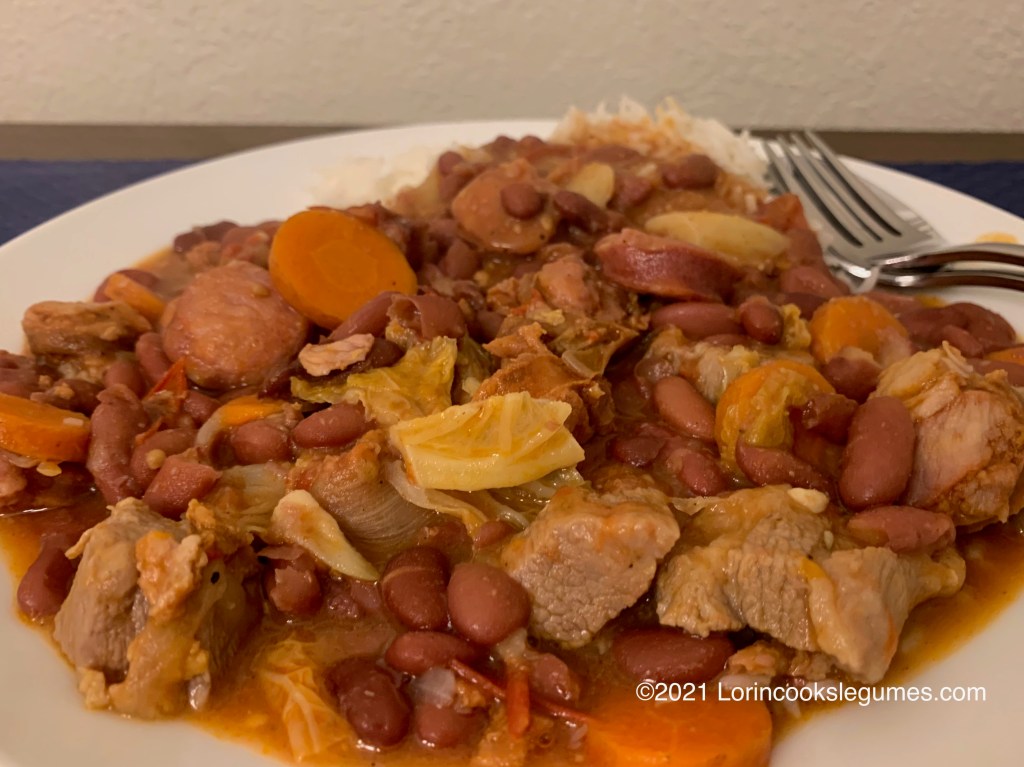
Feijoada (Portuguese pronunciation: [fejʒuˈadɐ]) is a stew of beans with beef and pork. The name feijoada comes from feijão, ‘bean’ in Portuguese. It is widely prepared in the Portuguese-speaking world,with slight variations.
https://en.wikipedia.org/wiki/Feijoada
Wow. Two Years. Today is the 2nd anniversary of the day I pushed the button and Lorincookslegumes went live. It’s also my birthday, so that’s an easy anniversary to remember.
I certainly haven’t gotten rich yet (not that I really have any plans to try to get rich from this). There are still days when no one looks at my blog. But a number of myrecipes show up on page one of Google search results. A handful seem to generate regular traffic. No one is leaving comments, so I can’t say if anyone else is actually cooking my recipes, but my stats show several hundred shares on Facebook, Twitter and Pinterest, which mostly aren’t me. (Up until a few weeks ago my personal Facebook was the only place I shared my posts. I now push them on Twitter as well, although with no followers I don’t know who sees them. [It’s @lorincooksbeans if you want to be my first Twitter follower, or follow Lorin Cooks Legumes on Facebook.]) All in all it’s been a rewarding and successful two years. I just checked out my stats, and noticed the awesome fact that the next hit my blog gets will make it so exactly half my all time views will have come in 2021.
OK. Enough about blog stats. On to the real business of the day, Feijoada de Moçambique.
This, of course is the sixth stop on my tour of feijoadas. If you are new here, feijoada originated in Portugal, and versions of it are found around the world in all the different places the Portuguese colonized. The Brazilian version is the most famous, but I’ve been exploring some of the other versions. This is our last African stop before we head across the Indian Ocean.
Mozambique is on the southeast coast of Africa, directly opposite Madagascar. Under Portuguese Rule for over 450 years, it gained independence in 1975, and promptly fell into civil war, lasting until 1992. Of course after 450 years of colonization, the Portuguese left a pretty big impression on the cuisine.
As I commented on my last post, it’s getting harder and harder to find source material to base my recipes on as I move into these poorer third world countries. (My intended next post is proving especially tricky- but we’ll talk about that next time.) Normally I look at about one page of Google results to create my recipes. For Mozambique I had to go three or four pages deep to find enough recipes to work from. The primary recipe that came up over and over is from the Peace Corps, and strikes me as created with American grocery stores and taste buds in mind. It still wound up having quite a bit of influence on my recipe, but I found enough other, more authentic, recipes to put a different twist on it.
My impression is that cattle are a more prevalent variety of livestock in Mozambique than pigs, so I think that including some cow parts in the feijoada is pretty typical. However, there wasn’t enough agreement about which parts of the cow for any of them to make it into the final recipe. The main options seemed to be tripe or feet, and feet managed to make it into my list of optional ingredients, and I there were versions that did not contain beef, so it’s not totally inauthentic.
I’m sure that for both the pork and the beef it’s traditional to use less desirable pieces, like feet. But again, it’s probably even more traditional to just use what you have, so I used a chunk of pork shoulder. Obviously a Portuguese style sausage of some sort is probably most traditional, but again use what you have/like. I happened to have extra chouriço and linguica in the freezer, since I’ve been doing a bunch of feijoadas recently, but I wouldn’t hesitate to use something else.
Since I didn’t use any beef, the biggest change from previous versions, besides a different kind of beans, is the use of curry powder. India has had a fairly sizable impact on the cuisines of a number of south and east African countries, so it’s not surprising that this would start to sneak in here- and gives us a hint of the direction the flavors might go in the last few versions. I purchased Rajah brand medium curry powder* from Amazon. This is an African style curry powder. I haven’t done enough research to really know what the difference between African and any other curry powder, and I can say that it smells pretty much like any other curry powder I’ve used, so if you have a curry blend you like, go ahead and use it.


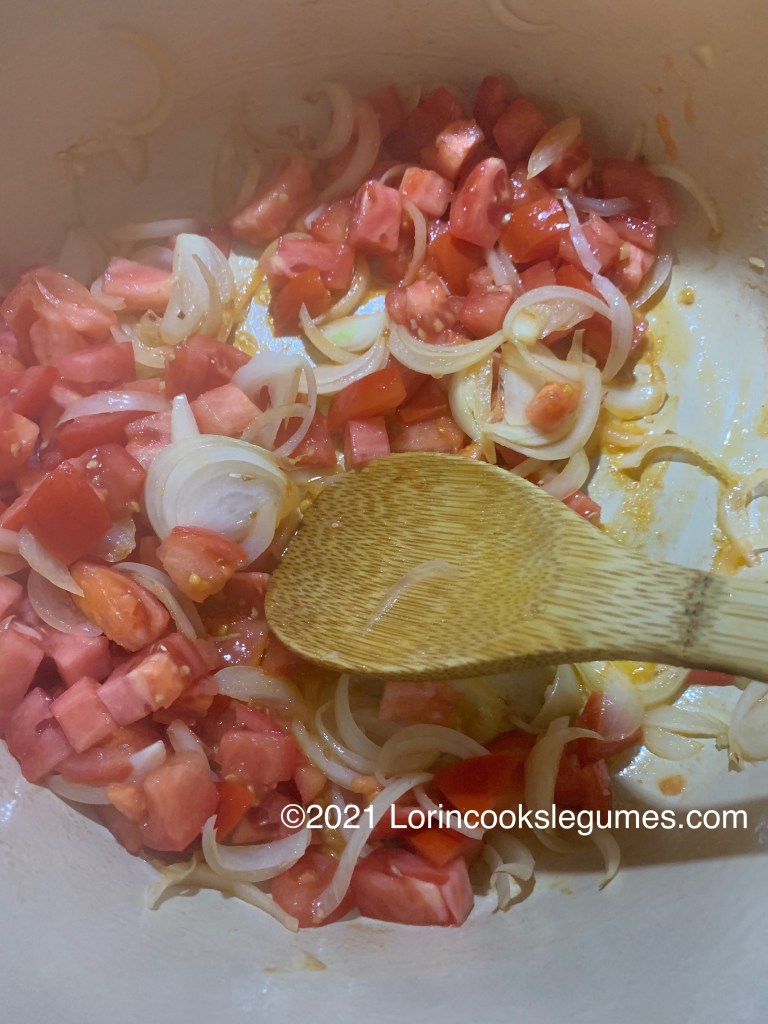
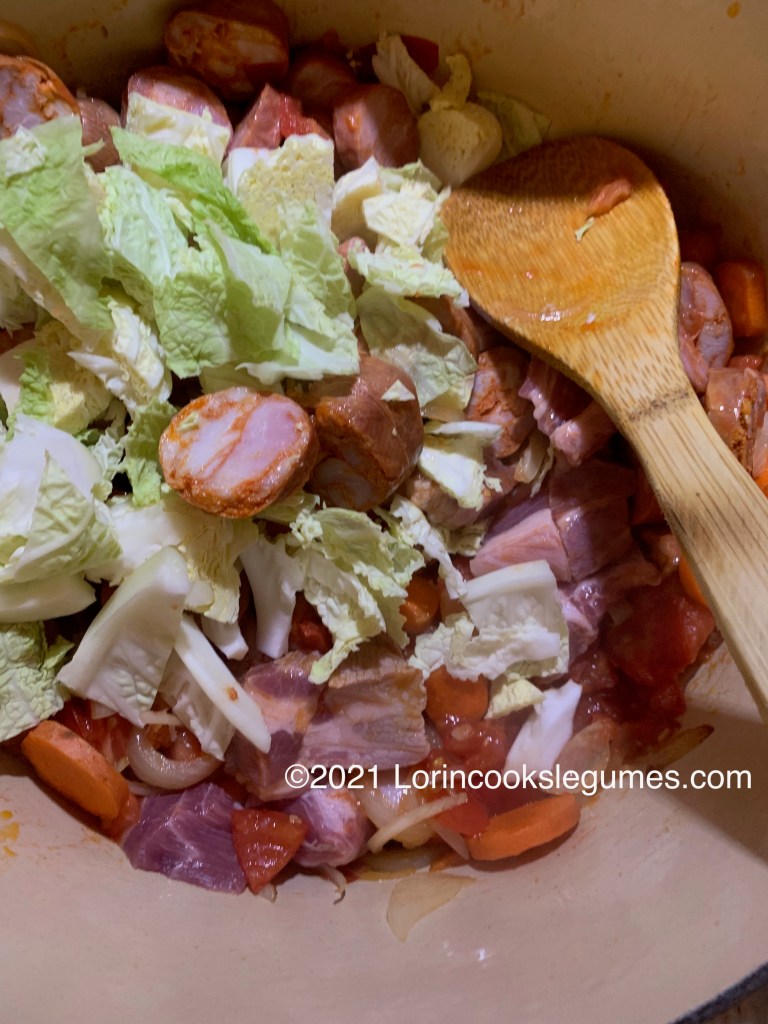
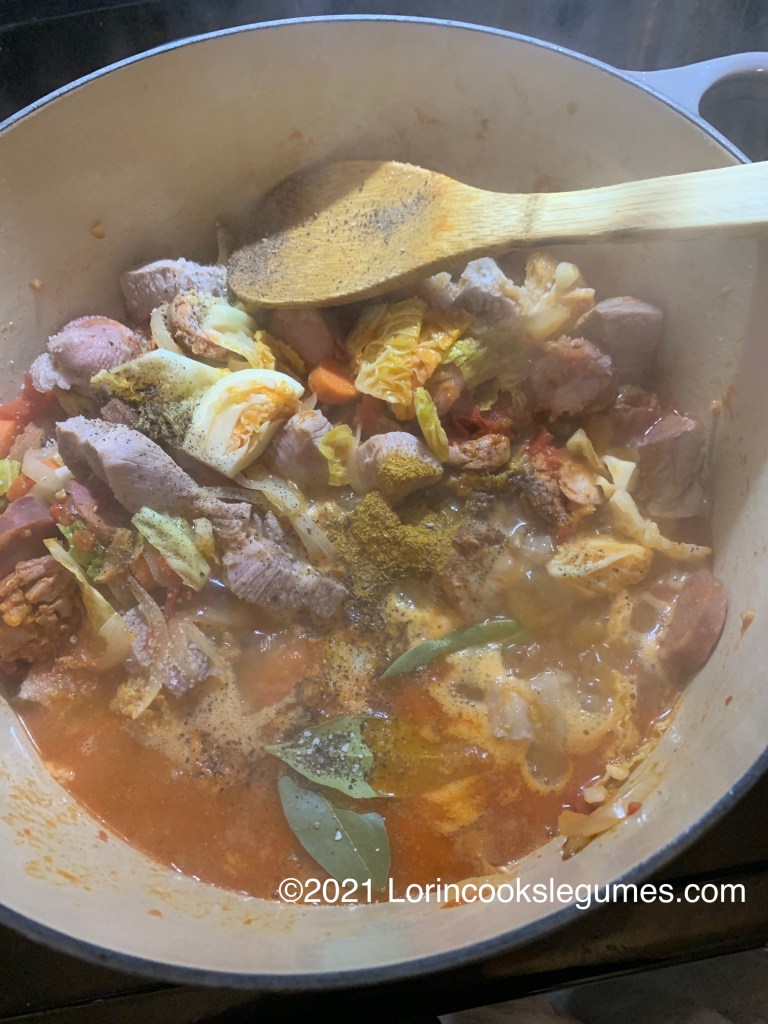

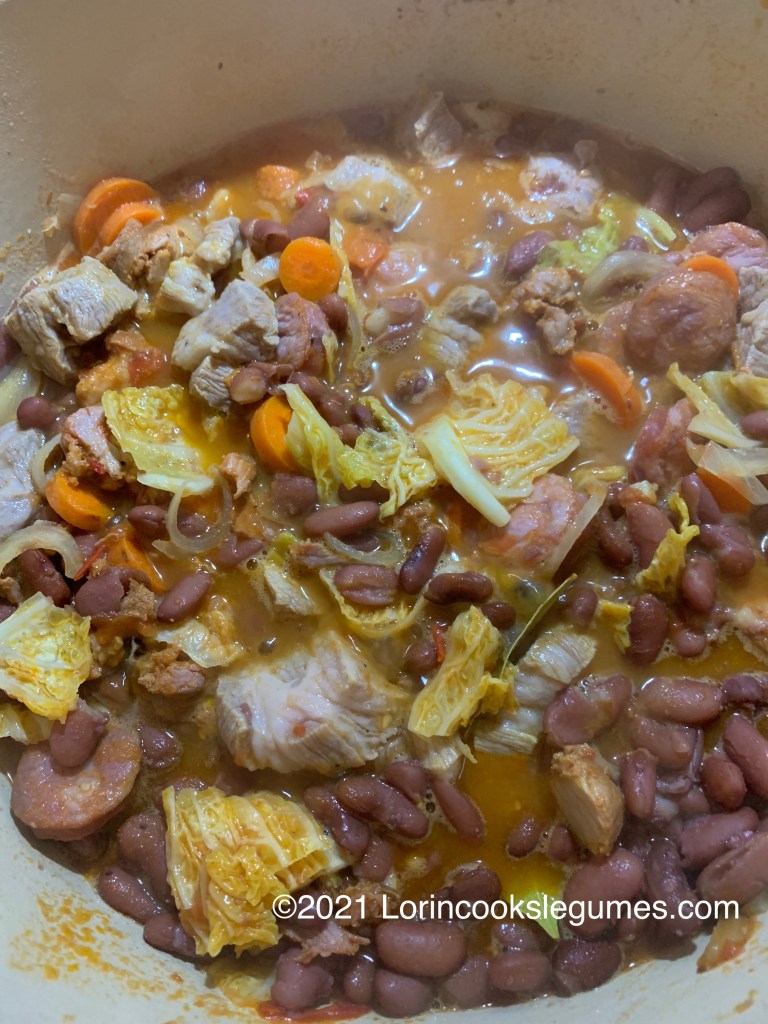
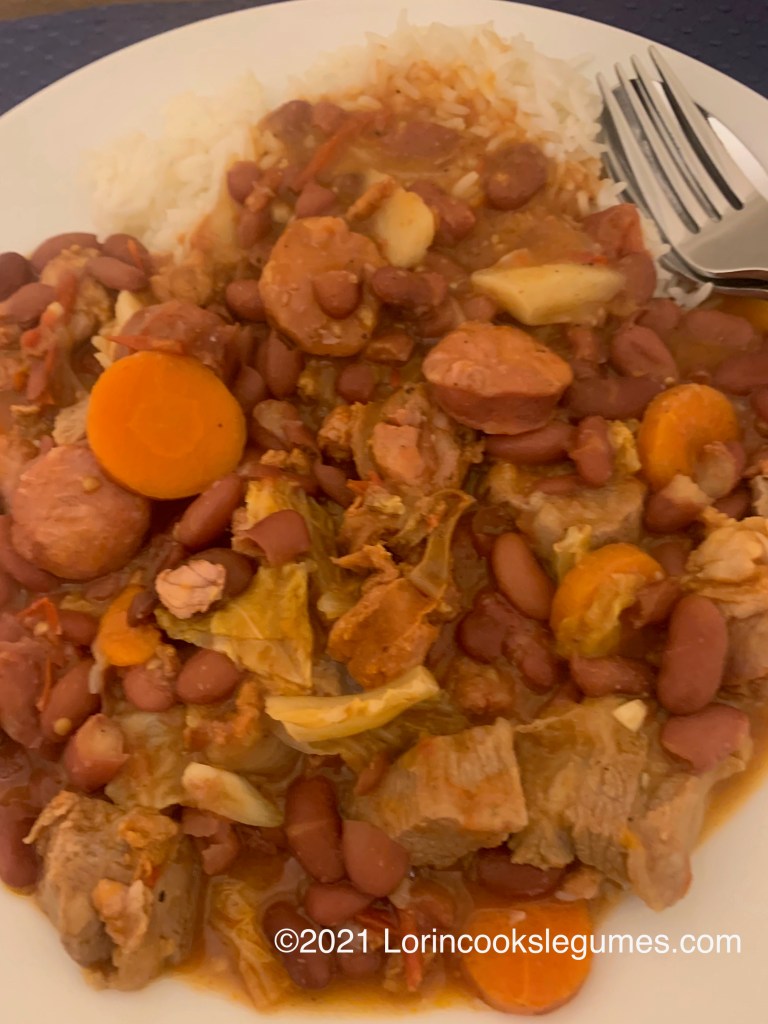
Feijoada de Moçambique
Serves: 6-8
Prep:30 minutes
Cook: 2:30-3:30
Total: 3-4 hours
(As an Amazon Associate I earn from qualifying purchases.)
2 cups kidney or brown beans
3 Tablespoons vegetable oil
1 yellow onion, sliced
3 cloves garlic, minced
2 medium tomatoes, diced
2 carrots, sliced
1 lb. pork, diced
2-3 sausages (about 1 lb.), sliced
¼ head cabbage, coarsely chopped
1 cup water
3 bay leaves
¼ teaspoon hot sauce, or to taste
1 teaspoon Rajah curry powder
Black pepper to taste
Salt to taste
Optional:
½ kg. cow heels, cooked
½ teaspoon roasted coriander powder
½ sachet benny spice (powdered chicken stock)
½ large green pepper, chopped.
Pick over beans and remove any bad beans or foreign objects. Rinse, drain, and cover with cool water and allow to soak over night.
Drain beans, cover with about 2 inches of fresh water, bring to a boil and simmer for 1-2 hours, until tender.
Heat oil in a large heavy pot. Sauté onion and garlic for a few minutes, then add tomatoes, carrots, pork, sausage, and cabbage. Continue to cook for a few more minutes, stirring occasionally, until pork is white.
Add water, bay leaves, hot sauce, curry powder, salt and pepper. Bring to a boil. Add cooked beans, and reduce heat to a simmer. Cook, stirring occasionally, for about 1 hour, or until pork is tender.
Taste and add additional hot sauce as desired. Serve over cooked rice.
*As an Amazon Associate I earn from qualifying Amazon purchases.
I receive no compensation for mentioning any other websites or product.
I could never do justice with your menus, so I try to get my wife to make some. She may improvise a little but either way, I get some good food!
LikeLiked by 1 person
Cooking is all about improvisation. I approve.
LikeLike